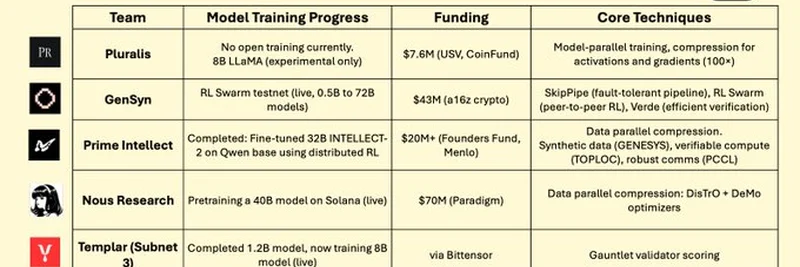Hey there, meme token enthusiasts and blockchain buffs! If you’ve been keeping an eye on the cutting edge of tech, you’ve probably heard whispers about decentralized AI training. It’s a game-changer, and a recent thread from Blockworks Research dives deep into this exciting space. Posted on July 25, 2025, this thread highlights how teams are collaborating globally to train AI models without relying on centralized powerhouses. Let’s break it down and see what it means for the future—especially for those of us in the meme token and blockchain world!
What’s Decentralized AI Training All About?
Imagine training a super-smart AI model, like the ones powering chatbots or image generators, but instead of one big company doing it all, a bunch of people worldwide pitch in with their computers. That’s decentralized AI training in a nutshell! It uses distributed networks—think of them as a team effort across the globe—to build these models. The cool part? It challenges the dominance of tech giants and opens the door for more democratic access to AI development. Plus, it ties in nicely with blockchain’s ethos of decentralization, which might just spark some innovative meme token projects down the line.
The Team Summary: Who’s Leading the Charge?
The thread comes with a handy table summarizing the key players, their progress, funding, and the tech they’re using. Here’s a quick rundown:
- Pluralis: Still in the experimental phase with an 8B LLaMA model, they’ve secured $7.6M from USV and CoinFund. Their focus? Model-parallel training with some slick compression tricks.
- Gensyn: These folks are live with a RL Swarm testnet, scaling from 0.5B to 72B parameters, backed by $43M. They’re all about fault-tolerant pipelines and peer-to-peer reinforcement learning.
- Prime Intellect: They’ve already fine-tuned a 32B INTELLECT-2 model using distributed reinforcement learning (RL), with $20M+ from Founders Fund and Menlo. Their tech includes data parallel compression and a cool system called TOPLOC.
- Nous Research: Pretraining a 40B model on Solana (yes, that Solana!), they’ve raised $70M from Paradigm. They use data parallel compression with optimizers like DiSTRO + DeMo.
- Templar (Subnet 3): Completed a 1.2B model and now training an 8B one, funded via Bittensor. They’ve got a Gauntlet validator scoring system in play.
- Macrocosmos (Subnet 9): Training a 15B model, also via Bittensor, with incentivized pipeline parallelism and a technique called CLASP for loss attribution.
This table, credited to Chain of Thought, gives us a snapshot of where these teams stand as of mid-2025.
Why This Matters for Blockchain and Meme Tokens
So, why should meme token fans care? Decentralized AI training aligns perfectly with the decentralized nature of blockchain. Teams like Pluralis and Nous Research are using blockchain platforms (e.g., Solana) to power their efforts, which could inspire new meme token ecosystems. Imagine a token that rewards contributors to AI training nodes—sounds like a meme coin with a purpose, right? Plus, the funding (over $140M across these teams!) shows big investors believe in this shift, which could trickle down to innovative projects in our niche.
The Tech Behind the Magic
Each team brings unique techniques to the table. For example, Gensyn’s SkipPipe ensures training doesn’t crash if a node drops out, while Prime Intellect’s TOPLOC makes distributed computing more robust. These innovations could eventually optimize blockchain networks too, reducing costs and boosting efficiency—key concerns for meme token scalability.
What’s Next?
The thread suggests this is just the beginning. With reasoning models driving up inference costs, decentralized networks might become the backbone of the AI economy. For blockchain practitioners, this opens doors to integrate AI with decentralized finance (DeFi) or even create AI-driven meme token strategies. Keep an eye on these teams—they might just shape the next big thing!
Got thoughts on how this could spice up the meme token space? Drop a comment below or join the convo on Meme Insider’s forum! And if you want more deep dives like this, subscribe to our newsletter for the latest blockchain tech updates.


